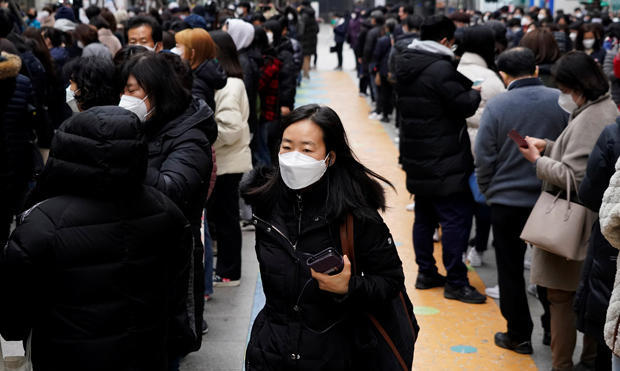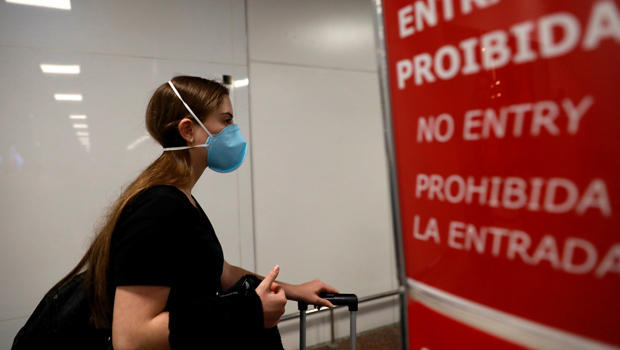Coronavirus began in China several months ago, and since then, the virus – and fear of it – have been spreading around the world. There is no vaccine for coronavirus yet, but there is a treatment for fear. It’s called facts.
And here is a dose of them:
What is Coronavirus?
Coronavirus causes a respiratory disease called COVID-19. Symptoms include fever, cough, and shortness of breath. Most cases (about eight out of ten) are mild. The more serious cases can lead to severe lung damage.
Coronavirus is thought to spread mostly through close contact. An infected person coughs or sneezes, sending droplets containing the virus through the air. Someone nearby – say, up to about six feet away – breathes those droplets and can become infected. The virus can also spread hand-to-hand. You touch an object that has the virus on it, then touch your mouth, nose, perhaps even your eye. Scientists are studying how long the coronavirus can survive on various surfaces or whether there are other ways of spread.
- How companies in the U.S. should prepare for the coronavirus (CBS News, 2/28/20)

KIM HONG-JI/REUTERS
Mortality rate
Just two days ago, a study from China of nearly 1,100 patients with COVID-19 reported a mortality rate of 1.4 percent; that means that of every thousand people infected, 14 will die. The death rate with flu is about 1 in a thousand.
But some scientists feel the actual rate with coronavirus may be lower, and, in fact, closer to flu, because there are likely many cases we don’t know about, either because they are mild or the patients have no symptoms at all.
Also, people who are older or who have other ailments, such as diabetes or lung disease, appear to be at greater risk for getting a severe case of coronavirus. But for some reason children seem to be relatively spared.
- World Health Organization raises global risk level to “very high” (CBS News, 2/29/20)
Testing kits
Right now, there’s a shortage of testing kits for the virus. When more testing is available, we’ll get a better idea of how widespread this virus is. We’ll be able to screen communities for both active infection and evidence of past infection.
What are “Community Spread” cases?
In the United States, we’re starting to hear about a small number of cases of COVID-19 from what’s called community spread. That means there is no clear source of infection (such as travel to an affected region, or close contact with a patient). This is not at all surprising, especially since people will likely not have effective immunity to this new type of coronavirus. We should expect the number of these community spread cases to continue to rise.
- Coronavirus quarantines in U.S. appear inevitable, doctor says (“CBS This Morning,” 2/28/20)
- Schools nationwide trying to stay ahead of any coronavirus arrival (CBS News, 2/28/20)
- The No. 1 way to prevent coronavirus isn’t wearing a face mask (CBS News, 2/27/20)
- One germy doorknob can infect half your office within hours (CBS News, 9/8/14)

DIEGO VARA/REUTERS
Is there a vaccine?
Vaccines are being developed at record speed, and several will begin clinical testing in the coming weeks. But it will take time to confirm their safety and their ability to protect against the virus. So, they aren’t expected to become widely available for at least a year. Antiviral drugs and other therapies are also being studied, but for now the main treatment involves supportive care, including breathing tubes in cases of severe lung damage.
- Coronavirus outbreak causes first drug shortage in U.S., FDA says (CBS News, 2/28/20)
How to protect yourself and others
So, where does that leave us? What can you do to protect yourself? Here are a few suggestions:
1. Get the flu vaccine, and get your family protected. The flu can mimic coronavirus and make you think you have COVID-19 when you don’t.
2. Stuff your mother could have told you: Wash your hands, including the tips of your fingers, for 20 seconds (I know that’s a long time, but do the best you can); keep your hands away from your face; and cough into the crook of your arm, not into your hand or – worst of all – into the air.
3. Stay home if you’re sick. You’re not doing the boss a favor by coming to work and making everyone else sick.
4. Stay informed. A great source of information is the CDC website, cdc.gov. It’s especially helpful for information and advice about travel.
What about those surgical face masks so many people are wearing?
They may give some partial protection by catching droplets containing virus, but the virus is so tiny it can go right through the mask, or around it. If you’re sick, a mask might help protect others, but the CDC does not recommend it for routine use.
- Consumer demand for hand sanitizers is up 1,400% amid coronavirus (CBS News, 2/28/20)
What should we expect in the future?
Since this is a new type of coronavirus, it’s very difficult to predict. Respiratory viruses often like cold, dry air and may possibly start to die down with warmer, moister weather. But we don’t know that for sure, and there could be more waves of infection to come. Bottom line: There’s no way of knowing right now how long coronavirus will remain a problem.
One thing we should definitely expect is another outbreak of another type of virus. COVID-19 is just the latest example of a deadly viral disease jumping from animals to people. SARS, MERS and Ebola are others. We need to study why this has been happening. In Asia, deforestation may have increased contact between humans and bats, which can carry the virus that causes SARS or COVID-19. And we must think globally about how to prevent and respond to future outbreaks.
- Can you cancel that flight? Here are your rights with coronavirus (CBS News, 2/29/20)
Story produced by Alan Golds.
© 2020 CBS Interactive Inc. All Rights Reserved.
source https://betterweightloss.info/the-facts-about-coronavirus-what-you-need-to-know/


No comments:
Post a Comment